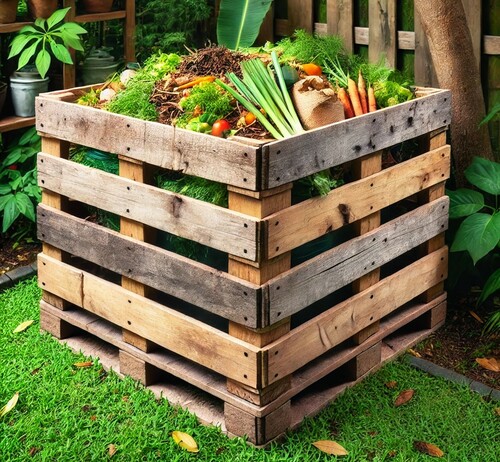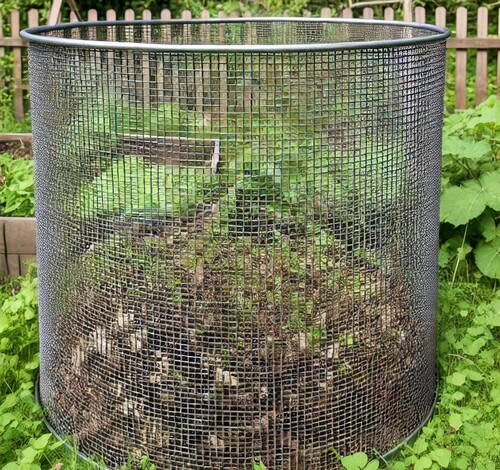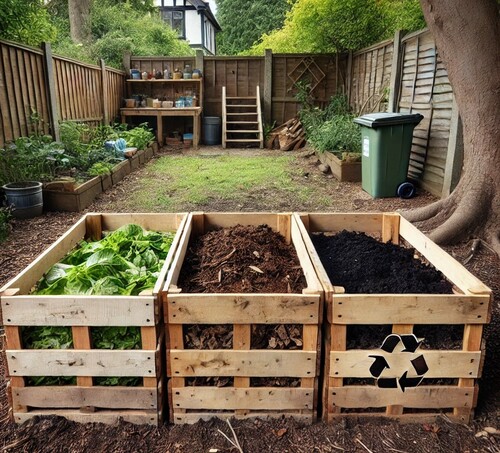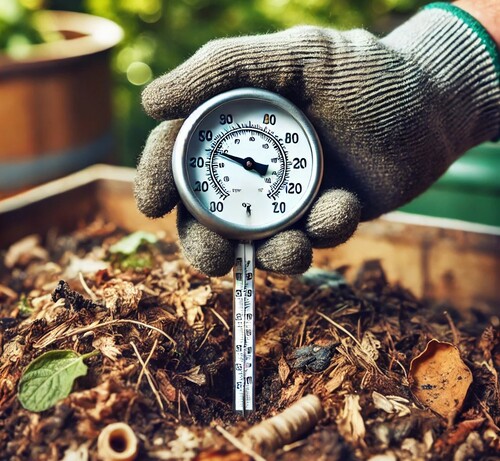DIY Compost Bin Designs for Every Budget
Introduction
Creating your own DIY compost bin is an eco-friendly solution that transforms kitchen scraps and yard waste into nutrient-rich soil for your garden. Whether you’re a novice gardener or a seasoned horticulturist, building a compost bin can be a rewarding project that suits any budget or space constraint. This comprehensive guide will walk you through various DIY compost bin designs, essential maintenance tips, and the science behind effective composting.
Why Build Your Own Compost Bin?
A well-designed compost bin is essential for efficient decomposition of organic waste into valuable garden fertilizer. DIY options offer numerous advantages:
- Customize the size and design to fit your specific space and needs
- Significant cost savings compared to store-bought alternatives
- Opportunity to use recycled materials, reducing environmental impact
- Creation of a system that matches your composting volume and style
- Satisfaction of building something useful with your own hands
By creating your own compost bin, you’re not just saving money; you’re also taking an active role in reducing waste and creating a sustainable garden system.
Budget-Friendly Options

An Eco-Friendly Compost Bin Built from Recycled Wooden Pallets
Pallet Compost Bin
Transform free or low-cost wooden pallets into an effective composting system with this detailed guide:
Materials Needed:
- 4 wooden pallets
- 16-20 screws (3-inch deck screws recommended)
- Wire or zip ties (optional)
- Hammer and screwdriver
- Drill (optional but recommended)
- Sandpaper or power sander
- Weather-resistant wood sealant
- Wire mesh (optional, for pest control)
Step-by-step construction:
1. Prepare the pallets:
- Clean each pallet thoroughly
- Sand rough edges to prevent splinters
- Apply weather-resistant sealant if desired
2. Create the base:
- Choose a level spot in your yard
- Lay down gravel or flat stones for drainage if needed
3. Build the structure:
- Stand three pallets upright in a “U” shape
- Secure corners with screws or strong wire
- Attach the fourth pallet as a removable front panel
4. Optional enhancements:
- Add wire mesh to interior walls to contain materials
- Create a hinged top from old plywood for rain protection
- Install handles on the removable front panel
Cost: $0-$30, depending on material availability
Wire Mesh Bin

An Efficient Wire Mesh Compost Bin for Garden Waste Management
This simple, affordable design provides excellent airflow for faster composting:
Materials needed:
- 10-12 feet of wire mesh fencing (4 feet high)
- Wire cutters
- Heavy-duty gloves
- 8-10 zip ties or wire fasteners
- 4 sturdy stakes or posts
Construction guide:
1. Choose your location:
- Select a level spot with good drainage
- Ensure easy access for adding materials and removing compost
2. Prepare the materials:
- Cut wire mesh to size (approximately 10 feet for a 3-foot-diameter bin)
- Smooth any sharp edges for safety
3. Form the cylinder:
- Shape the wire mesh into a cylinder
- Secure overlapping edges with zip ties or wire fasteners
4. Add stability:
- Drive stakes into the ground around the cylinder
- Attach the wire mesh to stakes for support
Pro Tips:
- Choose wire mesh with ½ inch gaps for optimal aeration
- Consider adding a wire mesh bottom to deter pests
- Create a removable section for easy compost harvesting
Advanced DIY Projects
Tumbling Composter
A rotating drum speeds up decomposition and makes turning compost effortless:
Materials:
- 55-gallon food-grade plastic drum
- 2×4 lumber for frame (approximately 20 feet)
- 1-inch metal pipe for axle
- Two bearing plates
- Screws, bolts, and washers
- Drill and hole saw
- Saw for cutting lumber
Detailed construction steps:
1. Prepare the drum:
- Clean thoroughly if used
- Cut a 15×15-inch door using a jigsaw
- Create a secure latch system for the door
- Drill ¼-inch drainage and aeration holes throughout
2. Build the frame:
- Cut 2x4s to create a sturdy A-frame structure
- Ensure the frame is wide and tall enough for drum rotation
3. Mount the drum:
- Install the metal pipe through the center of the drum
- Attach bearing plates to the frame
- Mount the drum on the frame using the axle and bearing
4. Final touches:
- Add a handle for easy turning
- Consider painting the frame for weather protection
Usage tips:
- Fill only 2/3 full to allow for mixing space
- Turn 2-3 times per week for faster composting
- Add water if contents appear dry
- Monitor temperature for optimal decomposition
Multi-bin System

An Eco-Friendly 3-bin Composting System Built from Recycled Wooden Pallets
Perfect for serious composters who want to manage different stages of decomposition:
Design specifications:
- Three connected bins, each 3x3x3 feet
- Removable front slats for easy access
- Optional roof for rain protection
Materials needed:
- Pressure-treated 4×4 posts (6)
- Pressure-treated 2x4s for framing
- 1×6 boards for sides and dividers
- Galvanized nails or screws
- Hardware cloth for pest control
Construction process:
1. Framework:
- Set corner posts in concrete
- Create frame using 2x4s
2. Walls and dividers:
- Attach 1×6 boards horizontally
- Leave ½-inch gaps between boards for airflow
3. Front access:
- Create removable front slats
- Install hooks or latches to secure slats
Using the multi-bin system:
- Bin 1: Fresh materials
- Bin 2: Active composting
- Bin 3: Finished compost
Aesthetic and Functional Designs

Stylish Compost Bin with Lattice Panels and Flower Planters for a Beautiful Backyard
Decorative Compost Bins
Blend functionality with garden aesthetics:
Design ideas:
- Use attractive weather-resistant wood like cedar
- Add lattice panels for visual appeal
- Incorporate planter boxes on exterior walls
- Consider a living roof with sedum or other plants
Construction considerations:
- Balance aesthetics with practical access
- Ensure adequate airflow despite decorative elements
- Use quality materials for longevity
- Include functional features like removable fronts
Space-saving Designs
Compact solutions for urban gardeners:
Options for small spaces:
- Vertical stacking systems
- Corner-fitting triangular designs
- Wall-mounted composting units
- Under-deck options
Design tips:
- Maximize vertical space
- Use modular designs for flexibility
- Ensure accessibility in tight spaces
- Consider weight when mounting on walls
Tips for Successful DIY Composting

A Balanced Assortment of Compostable Greens and Browns for Efficient Home Composting
Materials to Use
Choose sustainable and durable options:
- Weather-resistant woods like cedar or treated pine
- Recycled plastic lumber
- Galvanized metal for longer lifespan
- Hardware cloth for pest protection
What to Compost
Green materials (nitrogen-rich):
- Fruit and vegetable scraps
- Coffee grounds and filters
- Fresh grass clippings
- Plant trimmings
Brown materials (carbon-rich):
- Dry leaves
- Straw or hay
- Sawdust
- Newspaper or cardboard
Never compost:
- Meat or dairy products
- Diseased plants
- Chemically treated wood
- Pet waste
Maintenance Tips
Keep your DIY bin effective:
1. Monitor moisture levels
2. Turn compost regularly
3. Balance green and brown materials
4. Troubleshoot
common issues
:
- Bad odors: Add more brown materials
- Slow decomposition: Add nitrogen and water
- Pests: Secure bin and avoid prohibited materials
Seasonal Considerations
Adjust your composting practices with the seasons:
- Spring: Start with a layer of brown materials
- Summer: Monitor moisture levels
- Fall: Stock up on dry leaves
- Winter: Insulate bin and continue adding materials
Troubleshooting Common Problems

A Gardener Using a Compost Thermometer to Ensure Proper Pile Temperature
1. Compost isn’t breaking down:
- Solution: Check moisture and turn more frequently
2. Bin is attracting pests:
- Solution: Add dry brown materials and improve drainage
3. Excessive moisture:
- Solution: Add dry brown materials and improve drainage
4. Foul odors:
- Solution: Adjust green/brown ratio and increase airflow
Conclusion
Building your own compost bin is a rewarding project that benefits both your garden and the environment. Whether you choose a simple pallet design or an advanced tumbling system, the key to success lies in understanding the basics of composting and maintaining your bin properly. Start with a design that matches your space and your composting needs, and don’t be afraid to modify it as you gain experience. For expert guidance on composting and other sustainable gardening practices, contact Arborist Now —we’re here to help your garden thrive naturally.
We may receive affiliate compensation for some of the links below at no cost to you if you decide to make a purchase.


